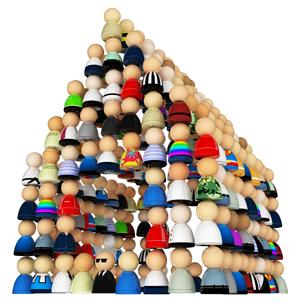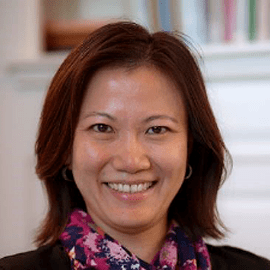
Communicating about Cultural Identity Differences Matters for Nonprofits
Nonprofit organizations (NPOs) are sometimes called value guardians of U.S. society. Many are founded by elites and professionals to serve members of marginalized groups such as racial/ethnic minorities and people living in poverty. As NPOs often have missions that are informed by social justice goals, how individuals communicate across differences (or social divides) becomes critical for achieving such goals. Those who hold different status positions within a nonprofit, however, often hold different views about who is being served and the purpose of the work. Communication across differences can become evident in how individuals align with cultural identity groupssuch as race, class, gender, sexuality, and educational level, and how their groups are represented. These are important to study because they have consequences for the NPO’s work. Despite social justice intentions of board and staff members, how social groups being served are labeled and positioned, as well as how staff and clients relate as they work together, can both hinder and facilitate the efforts of the NPO.
We studied how group-based identities were claimed and applied to others, how relationships became stratified based on group-based social status to privilege some over others, and how these functioned in two NPOs. We relied on interviews with board members/volunteers, staff, and clients in order to get views and experiences from individuals with different perspectives. We focused on two “identity-based NPOs” whose missions describe serving, advocating for, or “empowering” members of a specific marginalized group. One NPO was a nonprofit business that employed and provided social programs for low-income women (who were mostly Mexicana immigrant women), and the other was a social service agency that catered to underserved Asians.
Communication about cultural identity categories, especially by higher status group members, functioned to position groups and reinforce a status hierarchy. How staff members and clients approach their organizational and cultural identity differences can have long-term impacts on the work of the NPO. For example, staff in both NPOs oriented toward their clients as uneducated victims, as capable learners, or as low-income women who produced art for sale. These orientations positioned clients with different levels of agency, or options and abilities, within a dynamic and challenging social and political context.
Overall, we identified contradictions around different cultural identities and what they meant, and these contradictions affected relationships between clients and NPO representatives in ways that detracted from the nonprofit work. Communication regarding identities became problematic in at least three ways. First, participants across organizational status positions assigned different meanings to the core identity label(s) that both the NPO missions and board and staff members said were foundational (e.g., low-income for the first and Asian for the second). In the first NPO, the founders, board members, and staff strategically employed the label “low-income women” to obtain funding and attract community support, whereas the women employees interpreted “low-income” to mean “having nothing to live on” and struggled with being described this way. In the second NPO, the label “Asian” had contradictory meanings. Some clients thought Asian meant Chinese or Japanese only; some staff criticized the pan-Asian label as reinforcing overgeneralized stereotypes.
Second, we found contradictions in self-avowed identities (how group members present themselves to others) vs. other-ascribed identities (representations of cultural groups of/by others). NPO board and staff members often represented, spoke for, and positioned their clients in ways that functioned to erase or disregard broader societal order and clients’ racial/ethnic/class positioning. The importance of honoring self-avowed group identities or labels, particularly from individuals who align with “minority identified” positions, is evident in the comments of a staff member of mixed heritage:
I guess it denies them [clients] of their identity based on how we perceive it, instead of how they perceive it. ‘Cause if they look at me [they] say I’m white, but I’m not. Maybe they might think that I am Spanish, but I am not.”
In the NPOs, there wasn’t a lot of attention to broader societal representations of Mexicana immigrants or Asian women, and only minimal attention was given to histories of the varied cultural groups in the United States and the current political climate. All of these formed the context of the clients’ lives and those of their families. While staff did acknowledge that laws related to immigration were important in working with women who often were not citizens, nonetheless, lack of in-depth conversations about different histories, problematic representations, and differences in options took away opportunities for engaging in more collaborative knowledge sharing, promoting more equitable relationships, and designing more relevant educational programs.
Third, when considering power relations associated with different cultural identity groups, we observed certain identity-based status hierarchies. Most staff and board members had higher socioeconomic class status and had higher levels of education than those they served. While most agree that boards and staff can use their higher status and levels of privilege to increase access to more resources, however, lack of recognition of their positions, combined with contradictions between self-avowed and other-imposed identities, could contribute to fostering relationships of dependence rather than empowerment. In this era of neoliberalism, it is particularly important to ask about these taken-for-granted assumptions, long-term benefits and consequences of expecting profit from “production women” or for Asian women to adapt by stepping into a “model minority” image.
Since organizational and cultural differences are not neutral and are tied to power relations, we urge leaders of NPOs to work with clients and staff to consider how they label and position cultural identity groups, their relationships with each other, and how these affect their work. Specifically, as an entry point, we suggest bringing awareness to the different ways in which members of a NPO identify in relationships to other members, the different meanings that they assign or are imposed onto their cultural identities, and why (for example, experiencing and debriefing activities such as cultural identity wheels or pie charts). Then, the subsequent step is to engage in dialogues about issues of power, privilege, and marginalization pertaining to how the different cultural identities differentially position individuals and groups (for example, ask questions such as: Whose voices are heard and whose are not? Whose voices are privileged or silenced? Are there alternative labels to describe one’s own groups and others’ groups? What gets accomplished in the process and who benefits?). The last step is to consider how cultural identity differences factor into how decisions are made regarding the work of the NPO. These suggested steps do not mean to indicate a linear process. Taking such steps is essential because, ultimately, how NPOs communicate across social divides matters for the difference that they can make in society.


